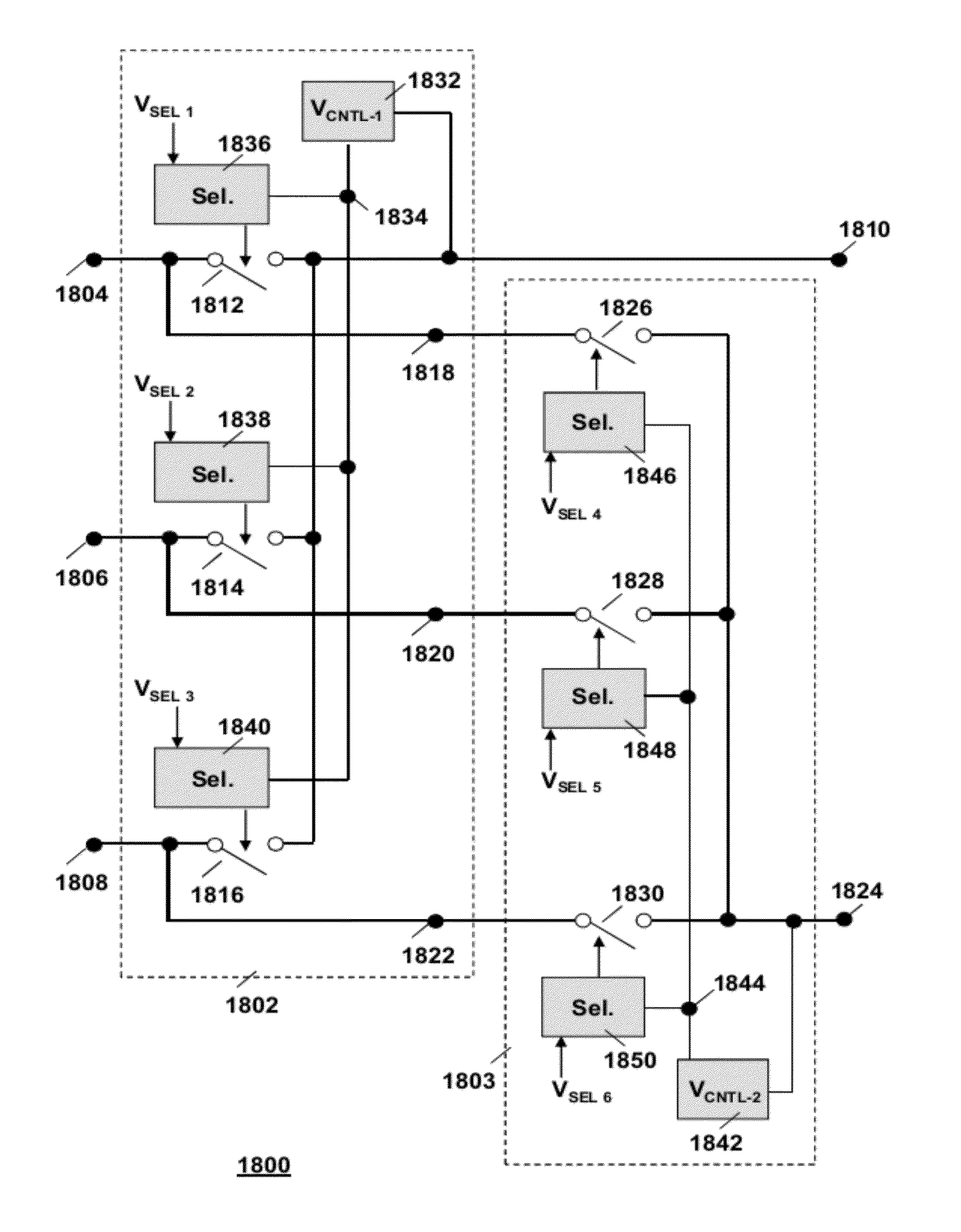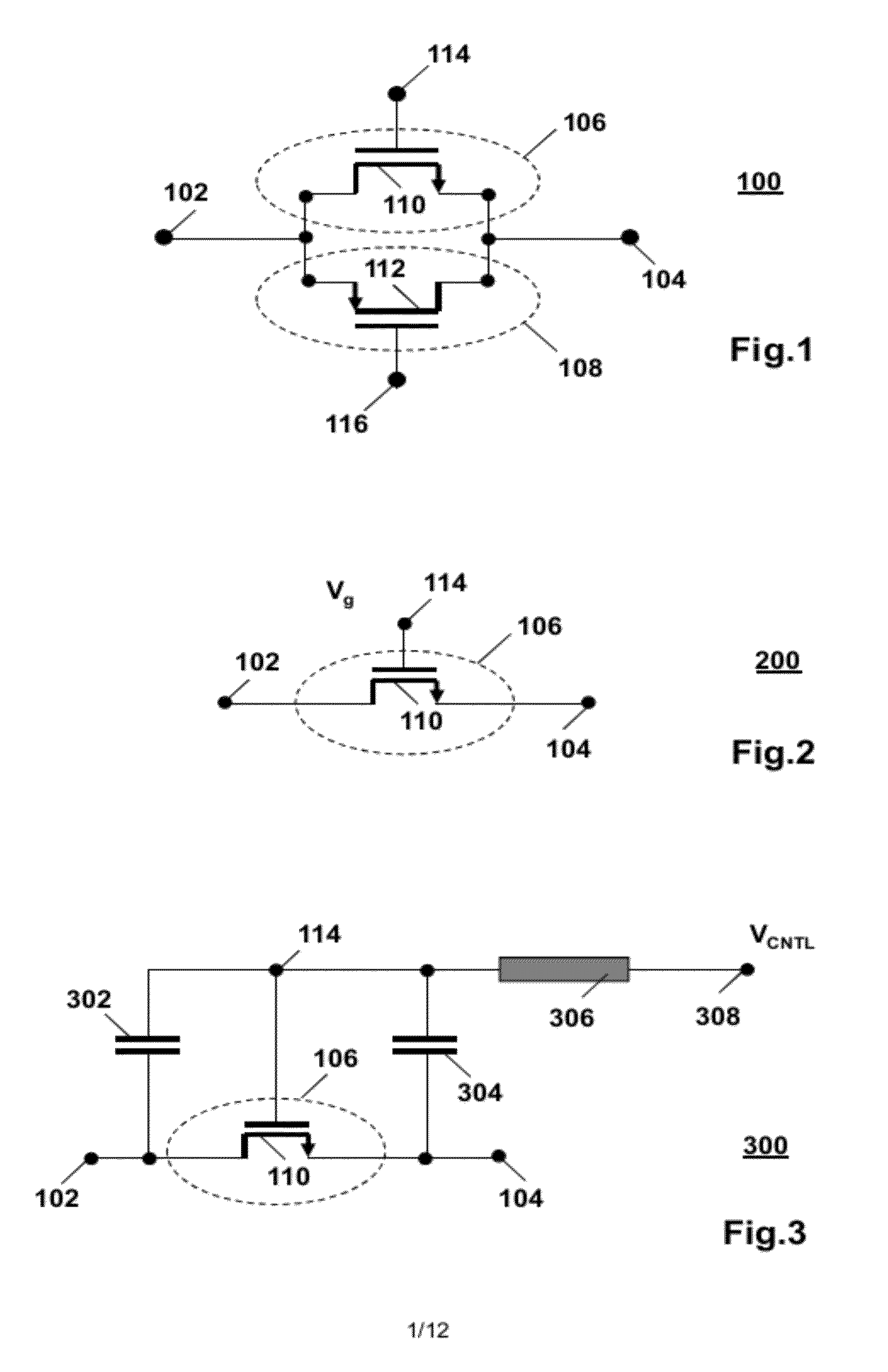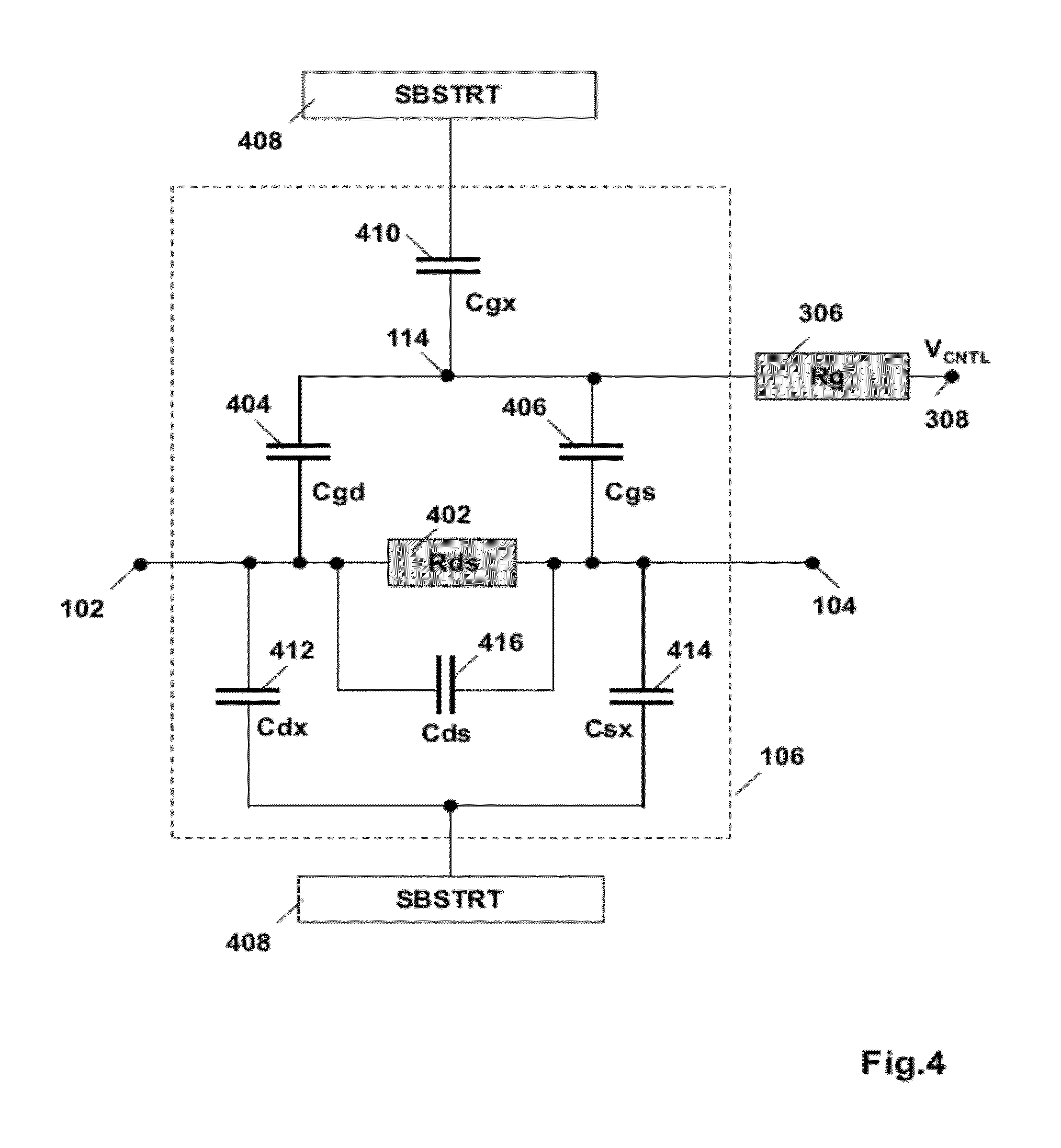Control-voltage of pass-gate follows signal
a control voltage and passgate technology, applied in the direction of pulse automatic control, pulse technique, electronic switching, etc., can solve the problems of capacitive load, device cannot withstand large voltages across their terminals, and the on-resistance of supply voltage and level, so as to improve the higher-frequency common-mode tracking of control voltage, the effect of low power consumption and high impedan
- Summary
- Abstract
- Description
- Claims
- Application Information
AI Technical Summary
Benefits of technology
Problems solved by technology
Method used
Image
Examples
Embodiment Construction
[0191]FIG. 1 is a diagram of a first conventional pass-gate 100 for controlling the passage of a signal at a first input node 102 to a first output node 104 under control of a control-voltage. The first conventional pass-gate 100 comprises a first field effect transistor (FET) 106 and a second FET 108. The first FET 106 is of an N-channel conductivity type, e.g., an NMOS FET, and the second FET 108 is of a P-channel conductivity type, e.g., a PMOS FET. The first FET 106 has a first current channel 110, and the second FET has a second current channel 112. The first current channel 110 and the second current channel 112 are connected in parallel between the first input node 102 and the first output node 104. The first FET 106 has a first control electrode 114, and the second FET has a second control electrode 116. Typically, the first control electrode 114 and the second control electrode 116 receive logically complementary control-voltages to render the first current channel 110 and ...
PUM
 Login to View More
Login to View More Abstract
Description
Claims
Application Information
 Login to View More
Login to View More - R&D
- Intellectual Property
- Life Sciences
- Materials
- Tech Scout
- Unparalleled Data Quality
- Higher Quality Content
- 60% Fewer Hallucinations
Browse by: Latest US Patents, China's latest patents, Technical Efficacy Thesaurus, Application Domain, Technology Topic, Popular Technical Reports.
© 2025 PatSnap. All rights reserved.Legal|Privacy policy|Modern Slavery Act Transparency Statement|Sitemap|About US| Contact US: help@patsnap.com



